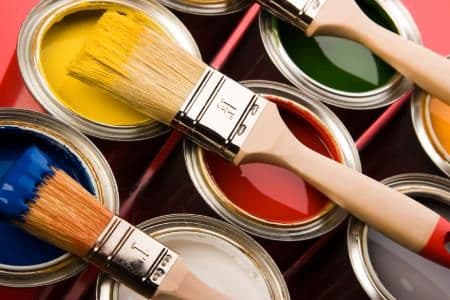 The following materials are currently used in the manufacture of brushes:
The following materials are currently used in the manufacture of brushes:
1) natural bristles (swine);
2) natural hair (horse, of the marten, badger, with an ox, coward, squirrel, the bears, goat);
3) fiber fibers;
4) artificial bristles (polyester, nylon, a pearl);
5) artificial bristles (polyester, polyamide).
Brush advantages, which is naturally crafted at the end.
To make such a brush, make two equally hard, naturally rounded by making brushes with bristles bind together. Brushes made in this way are admittedly expensive, but even after a long period of use, they retain their shape.
The feedstock used for the manufacture of the following brushes and brushes.
a) dusting brush: goat hair or artificial bristles;
b) varnish brush: European bristles (bright) and Chinese bristles (black); especially thin paint brushes are made of squirrel and bear hair; cheap paint brushes are also made of goat hair, as well as artificial bristles and artificial hair;
c) lettering brush: hair of the red marten and ox hair;
d) poster writer: mainly the hair of the red marten and the hair of the ox;
e) contour brush: mainly the hair of the red marten;
f) rubbing brushes: horsehair, ox hair and artificial bristles.
In a natural bristle brush, when using water-soluble dispersion varnishes, the force of tension wears off quickly, the brush becomes limp. It happens so, because with prolonged exposure to water – the scales on the bristles open very wide. On the other hand, brushes made of artificial bristles, even when painting with water-soluble materials, retain shape stability.
The bristles and bristles contain many voids forming thin capillaries, which suck in the painting material, released only under the pressure of a brush during painting.
Disadvantages of brushes with a profiled tip.
The bristles are used to make these brushes. The correct brush end profile is thus obtained, that the bristles – after decomposition – it is heated in a special negative form to shape it. Brushes made in this way are very expensive, and they keep this carefully worked out form only for a short time.
A brush cap is a metal sleeve that encloses the body of the brush and connects it to the handle. The cap can be round or flattened. Seamless drawn ferrules are best. For ferrules with soldered seams, there is a risk of the seam tearing, when brushes stand in water for too long and wooden handles swell.
What effect does the end of the bristle hair have on the amount of paint that can fit in the brush?
As it grows, the bristles split into two or more tips. The brush is thus able to contain more paint.
The bristles and bristles have a similar structure. Its main element is the bone core, around which skin scales grow, forming a kind of armor. The flexibility and bounce of the brush depend on the nature of these scales. If the brush is kept in water for too long, the armor scales open, like in a pine cone. Loss of elasticity makes, that the brush becomes flabby and "frayed". As the brush dries, the scales close tightly around the bone core, and the bristles and bristles regain their elasticity. The bristles end in a single point, thinner or thicker.
Unlike hair, the bristles are ended with "flags", due to the division into numerous thin tips.
Artificial bristles have a diameter of approx. 0,2 mm, while synthetic bristles are much thinner; has a diameter 0,08-0,15 mm.
Why strongly stuck with varnish brushes made of natural bristles or natural bristles can be soaked in a solvent, not in lye cleaner?
Natural bristles and bristles react very strongly with lyes, destructive to them.